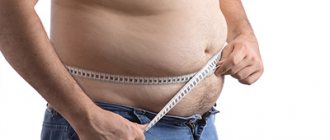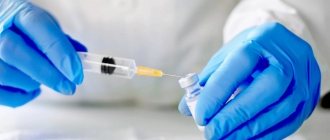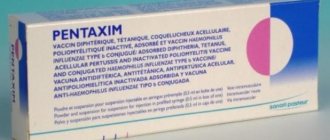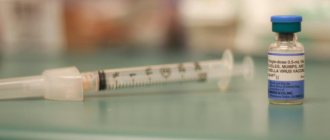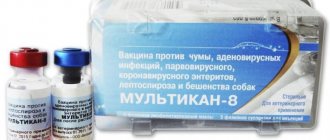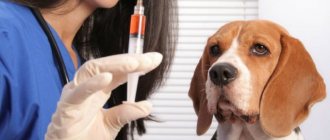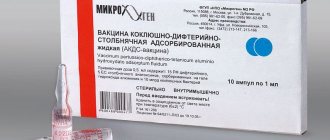Testosterone propionate is one of the Testosterone esters. It is a slower release injectable drug than non-esterified Testosterone, but with a faster release rate than other available esters. This feature is explained by the propionic acid ester attached to Testosterone. This change in structure leads to an increase in the release rate and half-life of Testosterone, making it higher than other known forms such as Testosterone Enanthate. Most Testosterone variants have been developed as single-part formulations containing a single esterified form, but products exist that consist of a mixture of several different esters in solution (notably Sustanon-250). The use of non-esterified Testosterone is impractical due to the short half-life (Testosterone Suspension is one such product, consisting of non-esterified Testosterone, which does not have an ester in its structure). Thanks to the addition of propionate, the half-life of Testosterone is 4.5 days. Testosterone is a natural anabolic steroid, which makes its use relatively safe. The versatility and flexibility of this drug allow it to be used for a wide variety of purposes and tasks.
Detailed information about Testosterone propionate was first published in 1935. The results of the search for other forms of Testosterone were then reported, since, as mentioned above, non-esterified Testosterone has a very short half-life. Shortly thereafter, the German company Schering AG began producing the very first Testosterone Propionate drug under the trade name Testoviron, which remains a popular brand today. This medicinal product was the first ester of the hormone to be synthesized, making it the oldest of the Testosterones, having been in use since the mid-1930s. Due to this, a huge number of Testosterone Propionate preparations were introduced into the prescription drug market in the United States, and until the 1960s it was the most used form of the hormone in the world. During the 1950s, there were 3 steroid options available (Testosterone Suspension, Testosterone Propionate and Methyltestosterone). Today there are hundreds of analogues of anabolic steroids. A little known fact is that there were buccal (a tablet placed between the surface of the gum and cheek) and sublingual forms of Testosterone Propionate, which were discontinued in the 1980s because they were not popular.
Testosterone propionate was widely used in medicine and had a wide range of indications. The drug was prescribed for male androgen deficiency, menopause, sexual dysfunction, endometriosis, dysfunctional uterine bleeding, as well as for many other pathological conditions. Ultimately, the US Food and Drug Administration (FDA) has significantly reduced the list of medical conditions for which Testosterone Propionate can be used. As a result, Testosterone should only be used in the treatment of male patients.
Testosterone propionate is a very popular anabolic steroid, and to this day remains widespread and widely available not only in the US market, but throughout the world. This is largely due to the fact that for a long time this was the only Testosterone variant available. Subsequently, more convenient Testosterone esters (Testosterone enanthate and Testosterone cypionate) were developed. They have a longer half-life and a relatively slow release rate. These drugs have become used by users who prefer less frequent injections. Today, Testosterone propionate is still present in the American prescription drug market, but its use has declined significantly as other, more convenient forms of Testosterone have been developed.
Chemical characteristics
Chemical structure of Testosterone propionate.
As mentioned earlier, Testosterone propionate is regular Testosterone with a propianate ester attached to it. The latter is propionic acid combined with the 17-beta-hydroxyl group of the hormone through an ester bond. Esters of anabolic steroids are better soluble in fats and are released more slowly from the injection site. However, it is not only for this reason that esters prolong the release of the steroid. The main reason is that when Testosterone propionate penetrates into the blood, some time is spent breaking the ester bond. As a result, the ester is detached under the action of enzymes, and free Testosterone remains, capable of performing its normal function. This process of enzymatic ester removal explains the slower release rate. The half-life of pure Testosterone is 2-4 hours. As a result of the addition of propionic acid ester to Testosterone, the half-life becomes 4.5 days.
Properties of the drug
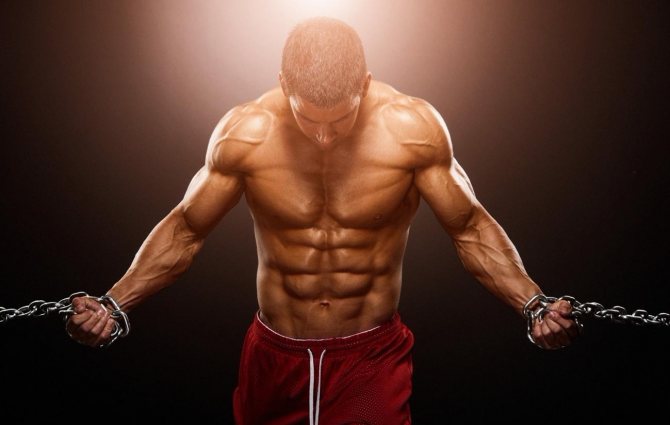
Testosterone propionate in its properties differs little from any other type of Testosterone, with the exception of the release rate and half-life. The structure of the drug is virtually no different from the natural hormone produced in the human body and most animal species. Due to this, Testosterone is considered the safest steroid to use, since every person's body is accustomed to the effects of Testosterone, albeit in smaller quantities.
Testosterone has moderate estrogenic activity and a moderate affinity for the aromatase enzyme (responsible for converting Testosterone into estrogen). Accordingly, a moderate level of aromatization should be expected when using Testosterone, unless an aromatase inhibitor (for example, Arimidex, Aromasin or Letrozole) that blocks the conversion of Testosterone to estrogen is also used. Therefore, Testosterone is preferred as a means to build muscle mass, but it can also be used in the “cutting” phase and burning fat. Ultimately, the use of one type of Testosterone is required during any anabolic steroid cycle, at least to maintain the physiological function of Testosterone in the body during the period when endogenous production of the hormone is suppressed or stopped due to steroid use. Testosterone also has a very strong anabolic effect and can be used on its own.
Among athletes and bodybuilders, there is an opinion that Testosterone propionate is the best version of Testosterone for use in the “cutting” phase and burning fat. Many claim that it retains fluid in the body to a lesser extent than other esterified forms of Testosterone. Such statements do not have any scientific basis. As explained earlier, the propionate ester (or any other ester bound to Testosterone) is always separated by enzymes in the body, leaving behind 100% pure Testosterone. This testosterone, identical to the natural hormone, can freely perform its function in the body, and this applies to any esterified forms of the hormone. Thus, the only possible change associated with the addition of an ester relates to the half-life and release rate. Obviously, there should be no other differences when using different forms of Testosterone, or they will be minimal, since only the amount of hormone released into the bloodstream at any given time depends on the added ester.
Side effects
Testosterone can be called the king of anabolic steroids. This is a natural hormone produced in the human body. Therefore, if a bodybuilder or athlete is planning long-term use of steroids, he should pay attention to Testosterone, especially when combined with propionate, due to its bioavailability and effectiveness over a long period of time. With this option of steroid therapy, it is possible to achieve a high level of concentration and aggression using standard dosages of the drug. In this case, the severity of adverse events will be relatively low. But it is necessary to remember that side effects exist, and they will be discussed below.
It should be noted that Testosterone propionate is one of the most studied steroid drugs in the world. It was the first synthesized compound that completely replicates the structure of a substance naturally produced by the body. Therefore, the scientific and sports communities have taken care to study the effectiveness of Testosterone in the long term. This drug is exactly what can allow an athlete to increase his potential or simply help him reach the next level. The reason is that this remedy is a “copy” of a compound familiar to the human body. Therefore, the tolerability of the drug is significantly higher compared to other anabolic agents.
The benefits of Testosterone, including those related to the severity of side effects, are especially noticeable when compared with other types of compounds, such as Trenbolone or other similar drugs with high toxicity.
Estrogenic Side Effects

The most frightening side effects of steroid use are related to the effects caused by estrogen. This is easy to understand, given the fact that the presence of masculine traits in males is largely determined by the predominance of Testosterone levels over estrogen. The opposite is true for women. You should know that each introduction of an exogenous hormonal agent into the body leads to a disruption of the natural production of the hormone. This means that whenever higher doses of an androgen (any variant of Testosterone) are used, estrogen levels will increase in response. If this is not taken into account, it will be difficult to prevent the negative consequences associated with Testosterone use.
The most common reactions that occur with Testosterone administration include estrogenic side effects, which are typical of any androgen. The greatest fear for most users is the risk of developing gynecomastia. This is a common side effect in men and occurs as a result of estrogen imbalance. Gynecomastia is often observed in adolescents as they reach puberty, but it can also occur in adulthood, especially with abuse or misuse of androgen drugs. In addition to gynecomastia, symptoms similar to those observed in women with high estrogen activity may develop.
Excessive estrogenic activity can be controlled using aromatase inhibitors (AIs) or selective estrogen receptor modulators (SERMs). Representatives of the IA group help reduce the level of estrogen in the blood. When using SERMs, Testosterone is blocked from binding to the enzyme that converts it into estrogen. This blocking prevents estrogenic effects, but other types of adverse reactions may occur. In particular, SERMs can prevent the development of gynecomastia, but if it is necessary to reduce serum estrogen, then the use of AIs is recommended.
Androgenic Side Effects
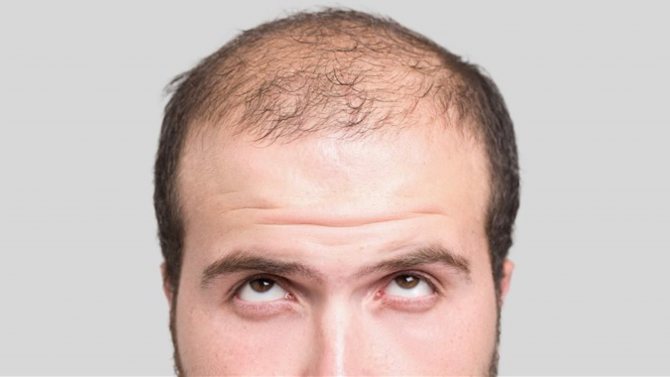
Do not forget that Testosterone is characterized not only by estrogenic effects, but also by a number of undesirable androgenic effects. For example, many people taking Testosterone go bald for a reason. Just as Testosterone binds to the aromatase enzyme and causes estrogenic effects, it also binds to the 5-alpha reductase enzyme and is converted to DHT (Dihydrotestosterone). This form of the hormone is more active and can significantly increase muscle strength, but the problem is a negative effect on the condition of the hair. The fact is that DHT is formed in certain areas of the body, primarily in the scalp, prostate and skin, which leads to various side effects, including baldness in men who have a hereditary predisposition to this. So, if this type of side effect is a big concern, it is better to consider an alternative way to increase muscle strength.
However, as with estrogenic effects, there are several options for managing the adverse effects associated with DHT. It is important to understand that an attempt to block the formation of DHT does not completely eliminate the threat of side effects, since Testosterone has very pronounced androgenic properties. But you can use drugs like Proscar or Dutasteride to combat the androgenic effects typically caused by DHT. In addition to male pattern baldness, DHT can cause oily skin, irritation symptoms, prostate enlargement, and acne. In fact, the side effects described are similar to those that can occur during puberty in adolescence.
Testosterone hormone in men
This hormone belongs to the group of androgens (steroid) , produced by Leydig cells in the testes and adrenal cortex. Testosterone in men
can be connected and active. Androgen is bound by proteins that perform a transport function, delivering the active substance to target organs. Active testosterone moves throughout the body and penetrates cells unhindered. The percentage of bound to active testosterone is 98% to 2%, respectively.
The main functions of testosterone in men include:
- regulation of the reproductive system, potency;
- puberty;
- development of secondary sexual characteristics;
- building muscle mass;
- regulation of metabolism;
- psychophysiological characteristics of behavior;
- control over sperm maturation.
The maximum level of the hormone is observed during puberty and in adult men. With age, testosterone concentrations decrease. The hormone mainly circulates in the body associated with albumins (54%), globulins (44%). It has an effect on tissue only in its free form. Total testosterone is determined in the blood serum using chemiluminescent immunoassay. If abnormalities are found, the serum bound globulin (SHBG) is checked.
The amount of testosterone depends on several factors:
- Young adulthood - the norm is 300-1000 ng/l;
- After 60 years - 50% lower;
- Seasons: androgen levels increase in autumn;
- Time of day: in the evening the amount of the hormone decreases by 13%, in the morning it increases.
Testosterone begins to work in males from the age of 13. Its task is to stimulate hair growth, the development of the musculoskeletal system and genital organs, influence spermatogenesis, the ability to ejaculate, the appearance of libido and loss of voice. In adolescents, body hair begins to actively grow, the voice “breaks” and bone tissue matures. In adult men, testosterone “guides” sexual function and arousal.

Increased testosterone in men
The amount of testosterone is controlled by the pituitary gland (an endocrine gland in the brain). When levels are low, the pituitary gland secretes hormonal substances that stimulate the testes to produce testosterone. The cause of excess of this hormone is active physical activity, endocrine tumors, Itsenko-Cushing syndrome, and genetic disorders.
Consequences of increased testosterone:
- Infertility;
- Strong growth of hair on the body;
- Alopecia on the head;
- Acne on the face;
- Apnea;
- Blood clot formation;
- Malignant neoplasm of the prostate;
- Instability of psycho-emotional state.
Low testosterone in men
The reason for the decrease in the amount of testosterone is dysfunction of the pituitary gland, hypothalamus, testicles, adrenal glands, Alzheimer's disease, obesity, steroid use, alcohol abuse and smoking. Lack of physical activity, unhealthy diet, stress, emotional tension in family relationships and conflicts also affect this. A natural decrease in sex hormone occurs after sex. The main manifestation of androgen deficiency is the formation of a female body type.
A man’s inability to conceive a child may indicate a low level of the hormone, therefore, if infertility is suspected, a testosterone test in men is required; the price can be obtained from a clinic consultant. To determine your testosterone level, you need to properly prepare: blood is donated in the morning on an empty stomach, 10 hours before you need to refuse food and water, and avoid psycho-emotional and physical overload.
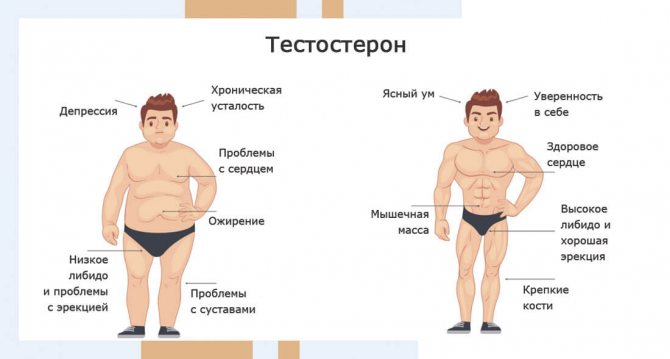
Side Effects Associated with Testosterone
By using any exogenous compound, we always put the body at risk. Regardless of the reason why it is done - for the sake of curiosity, as part of bodybuilding, exercise or to improve the quality of life, extreme caution must be exercised when using an androgenic drug such as Testosterone, and this is especially true when discontinuing the drug. It may seem counterintuitive, but very serious side effects are associated with stopping the use of any Testosterone product. Therefore, it is so important to know about such a side effect as stopping the production of the hormone. It develops as a result of the introduction of a very powerful androgenic drug into the body. In response to the supply of a hormone from the outside, its endogenous production by the body ceases. A short course may not have serious consequences, but long-term use of steroids will definitely lead to significant hormonal imbalance. The use of steroids can lead to a very unpleasant condition - hypogonadism, in which the natural production of Testosterone by the body does not occur. Staying in this state for a long time will have devastating consequences, which is why it is so important to use steroids responsibly. At the end of the steroid course, PCT, or post-cycle therapy, should be carried out. It uses aromatase inhibitors (AIs) to reduce estrogen levels in the body. It is also mandatory to use hCG, a natural hormone that stimulates the natural production of Testosterone by the testicles. If you do not follow these tips, you may need TRT (Testosterone Replacement Therapy) throughout your life to compensate for the lack of natural production of the hormone. This happens very rarely, but with excessive abuse of androgen drugs, this possibility cannot be excluded. If you correctly use drugs from the AI group and agents that restore hormone production, no problems should arise.
Hepatotoxicity
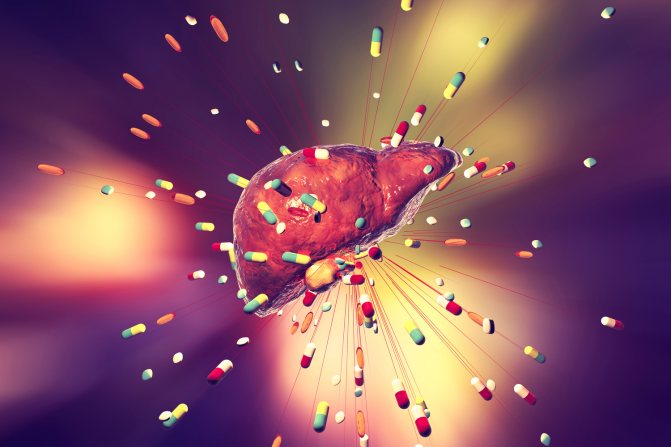
Any use of androgen drugs, other than the typical side effects, can have harmful effects on the liver. Hepatocyte regeneration occurs very slowly, meaning that if these cells are irreversibly damaged, a liver transplant may be necessary. This is an extreme case, but it is possible if you do not take care of the liver. This is why it is so important to know that almost any type of androgen has some toxicity, and its use increases the load on the lymphatic system. However, it is worth noting that the degree of liver toxicity depends on the type of androgen used.
When using Testosterone propionate, there is no need to worry about toxic effects on the liver. Let's start with the fact that the injection form of the drug enters the body bypassing the liver. When taken internally, the substance necessarily passes through the liver barrier, where a kind of test of the compound for safety for the body is carried out. Numerous studies of oral administration of high doses of Testosterone propionate have shown the absence of hepatotoxicity in this drug.
Cardiovascular effects
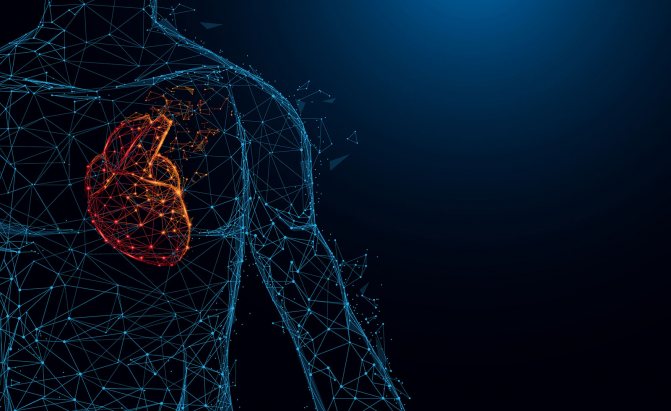
The use of any androgenic drug leads to changes in cholesterol levels. Steroid therapy can also affect blood pressure levels. However, the main reason for this undesirable phenomenon lies in the feedback mechanism, which manifests itself in a decrease in estrogen levels. Estrogen, despite its bad reputation for side effects, is very important for the normal functioning of the cardiovascular system. Its presence in sufficient quantities is a guarantee that the cardiovascular system is under control. This is why it is so important not to reduce estrogen levels to zero when using AIs. Therefore, it is better to use a lower dose that provides a moderate reduction in estrogen levels instead of completely stopping the body's production of it. This will make it possible to use an androgenic drug without harming the condition of the cardiovascular system. In addition, regular cardio training and diet are recommended to prevent negative side effects.
Genetics.uz does not sell or encourage the use of anabolic steroids and other potent substances. The information is not advisory in nature and is provided for informational purposes only. For the correct use of certain drugs, it is necessary to contact sports doctors and/or certified trainers.
Testosterone - benefit or harm. Why do Kazakh athletes take it?
Testosterone is the basic male sex hormone, which is responsible for the formation of characteristics characteristic of men. It is produced in low doses by the adrenal cortex in representatives of both sexes, by the ovaries in women, and the main amount is obtained from cholesterol in the testes of men.
This substance affects not only sexual function, but also behavior, formation, development and amount of muscle tissue and bone mass in men. That is why it is very often used by bodybuilders to build muscles, strengthen bones and give the body spectacular volumes and contours.
With long-term use of synthesized testosterone, a decrease in its natural production by the body may be observed. To avoid unpleasant changes and side effects, special therapy is carried out after a course of testosterone. This helps preserve the body's own ability to produce the hormone.
History of discovery and application
The first studies on this topic were carried out in the 20s of the last century. The hormone was first partially synthesized in 1935, and after 4 years they learned how to obtain it from cholesterol.
Purpose of testosterone use
Mostly amateur athletes seek to purchase testosterone in Almaty, because it is used extremely rarely by professionals due to doping bans. Compared to classic anabolic steroids, stimulation of muscle growth is more natural with almost identical results.
Under the influence of the hormone, more electrolytes and fluid accumulate in the muscles, due to which their volume increases significantly.
The product is most often used in the following sports involving power loads:
- Powerlifting.
- Arm wrestling.
- Kettlebells.
- Body-building.
- Weightlifting (less common than other sports).
The use of the hormone can have negative consequences, so medical consultation and regular tests for free testosterone levels are necessary.
Side effects of testosterone
The main deviations from the norm occur when the dose of a substance is exceeded or the duration of use is excessive. They appear as follows:
- Sexual desire (libido) decreases.
- The body's production of its own hormone is inhibited.
- Hair begins to fall out, most often baldness begins from the temporal and occipital parts of the skull.
- Extensive purulent rashes appear, similar to juvenile acne, first “sprinkling” on the back, then pimples appear on other parts of the body.
To avoid such manifestations, you must strictly follow the instructions and duration of use, and purchase the drug itself at the pharmacy.
Contraindications
Like any other drug, testosterone has contraindications:
- Hypersensitivity to the drug.
- Hypercalcemia.
- Tendency to severe swelling.
- Diabetes.
- Prostate hypertrophy.
- Prostate (breast) carcinoma.
- Nephrosis.
- Nephritis.
- Pathologies of the kidneys and liver.
- Coronary and heart failure.
- History of heart attack.
- Atherosclerosis.
- In women - pregnancy and breastfeeding.
We offer high-quality testosterone at the lowest prices in Kazakhstan. You can purchase drugs at the online pharmacy “SportFarm.kz”.
As an advertisement
Source:
https://involokolamsk.ru/novosti/uslugi/testosteron-polza-ili-vred-pochemu-kazahstanskie-sportsmeny-ego-prinimayut
